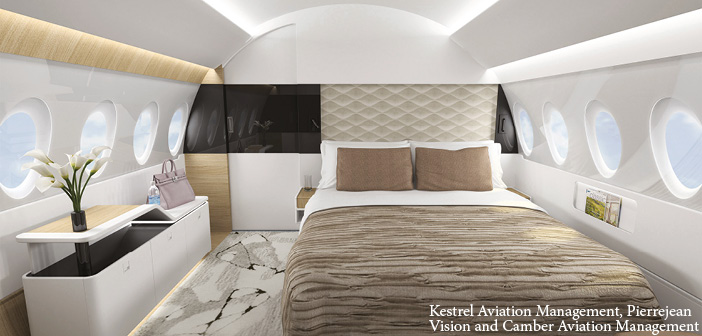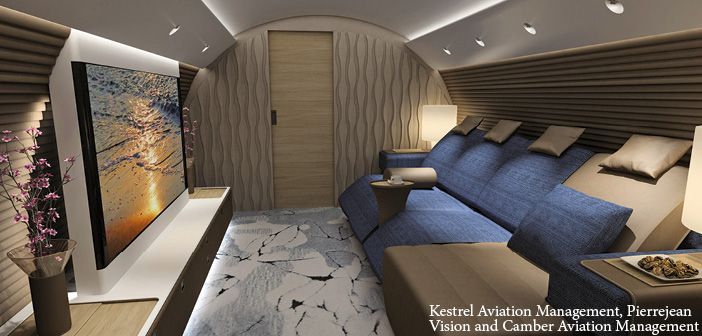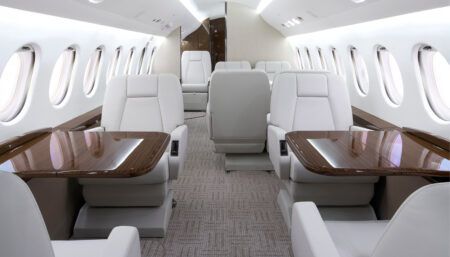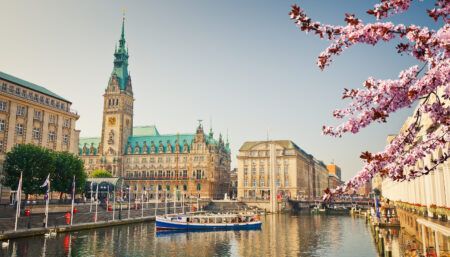An A220 corporate cabin concept created by Kestrel Aviation Management, Pierrejean Vision and Camber Aviation Management won the private jet design concept category in the 2021 International Yacht & Aviation Awards.
Completed in June 2020, the concept was featured in the July 2020 issue of Business Jet Interiors International. Please click here to read.
Two years ago, the project manager, technical manager and designer behind the first VVIP BBJ 787 cabin, showcased at EBACE 2016, partnered again to develop this A220 corporate cabin concept. Subsequently, F/List (as cabin fabricator) and Flying Colours (as integrator and certification entity) joined the group. The partners invested more than 18 months of detailed design work on the project.
“This innovative design addresses our VVIP customers’ request for a cabin with greater modularity and customisation potential, pre- and post-delivery; lower weight; shorter lead time; and competitive pricing,” said Stephen Vella, CEO of Kestrel Aviation Management. “Not only have we met and exceeded these criteria, but the results are applicable to both Airbus and Boeing platforms.”
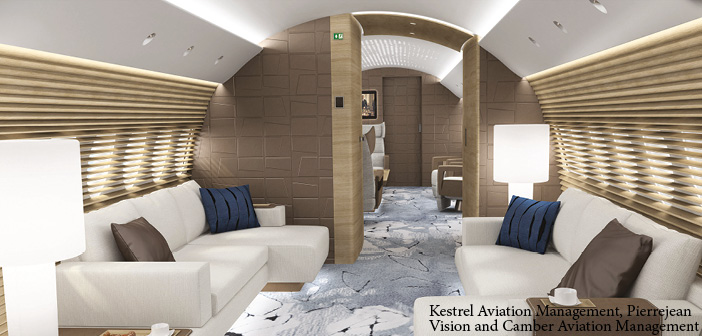
The Bombardier C Series (now A220) was chosen as a conversion platform due to many factors – its modern technology; its cabin volume, equivalent to the A319Neo or BBJ Max7; its take-off performance from hot, high and short runways; and the adaptability of the cabin.
There were many design objectives for the concept; it had to be innovative and differentiated from competitors, with state-of-the-art systems and materials and great cabin aesthetic customisation options. The team wanted to reduce the elapsed time for cabin modification, and also reduce cabin weight by 30% compared with legacy designs.
The design has a seven-zone modular cabin comprised of three fixed and four variable zones. The forward, mid and aft zones – incorporating the entrance/galley, lavatory/wardrobe and private suite with ensuite washroom, respectively – are fixed. The zones between are variable.
The modular cabin concept was developed to simplify cabin design, reduce completion build times and lower production and NRE costs over a number of aircraft, which the creators noted were crucial in reducing manufacturing, integration and certification costs. The objective of the parties is also to reduce product support costs after entry into service, to achieve greater reliability through common parts and well-thought-out, production-ready modular design. Critically, the customer gains the ability to customise the cabin to suit their unique requirements.
